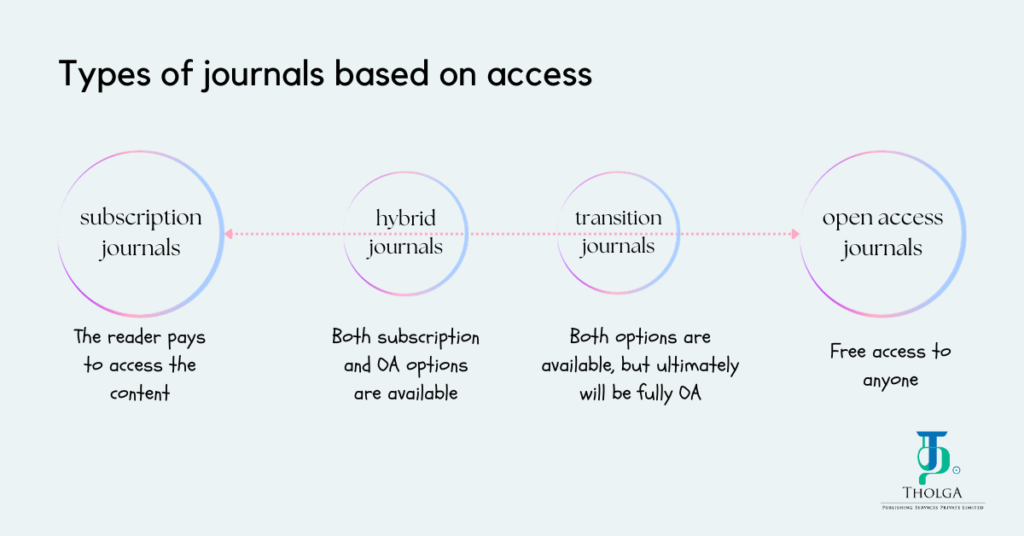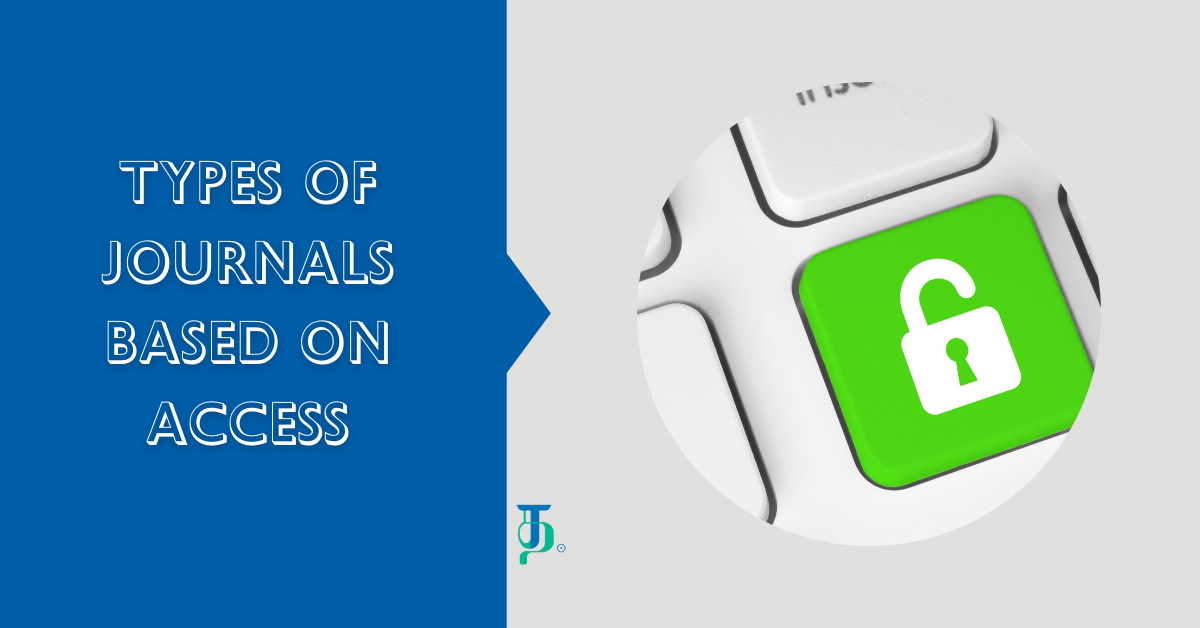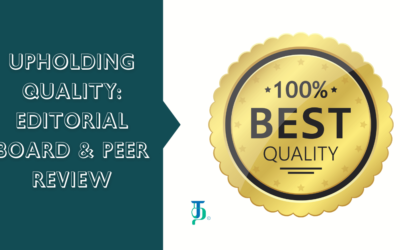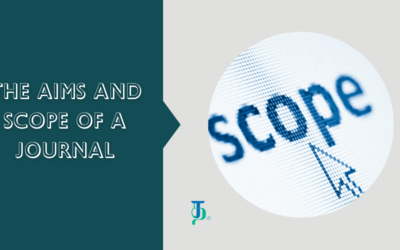Academic journals can be classified based on access to the reader. While subscription journals expect the reader to pay for their content, open access journals are free for the reader. While these two types of journals are complementary, hybrid journals provide flexibility for the researcher who submits their work to the journal. As some journals choose to provide this flexibility, transition journals offer temporary flexibility, ultimately moving towards fully open access.
Subscription journals
A subscription journal is a publication that readers can access only by paying a fee. This fee can be paid individually or through institutional subscriptions, often by libraries or universities. Essentially, the author/researcher doesn’t have to pay for publication, but the readers do.
The subscription model was once the only available model. In this model, researchers submit their papers to the journal and transfer the copyright to the journal in exchange for publishing and disseminating their work. The journal makes profits by “selling” the articles to interested readers – who can be individuals or institutions/libraries.
But subscription journals do not simply act as a medium of publication; they also play the essential role of upholding academic merit of the papers they publish. How do they achieve this? They set up a knowledgeable editorial board ably supported by peer-review volunteers. Besides, these journals invest heavily in support systems, such as copyediting and pagination.
However, the closed-access nature of subscription journals has been criticized for limiting access to research, particularly for researchers in developing countries or without institutional affiliation. Additionally, concerns exist about high subscription fees and the potential for profits to prioritize commercial interests over scholarly merit.
Despite these criticisms, subscription journals remain a dominant force in academic publishing, particularly in established and prestigious fields. They offer advantages like rigorous peer review, editorial curation, and the potential for high impact and visibility within specific academic communities.
Open access journals
The polar opposite of subscription journals are open access journals – call it the antithesis of a subscription journal. Instead of restricting access behind a paywall, open access journals make their research articles freely available online to anyone, anywhere, without any financial barriers. This philosophy aligns with the core goal of open access publishing: to remove all obstacles to accessing and reusing scholarly knowledge.
Any knowledge seeker with an internet connection can access articles published in open access journals without any restriction, regardless of his or her affiliation, location, or financial resources. This democratizes access to research and promotes wider dissemination of knowledge.
There are two main models of open access publishing:
- Gold OA: Authors pay an article processing charge (APC) to cover the costs of publication. This fee can vary depending on the journal and its publisher.
- Green OA: Authors self-archive their published articles in publicly accessible repositories, often affiliated with their institutions. While readers may still need to access the original journal via subscription, the research is available through alternative channels.
Despite concerns about quality of works published in early days, OA journals now employ rigorous peer-review processes similar to those of subscription journals, ensuring the validity and scientific merit of published research.
Open access offers several advantages, including:
- Increased readership and research visibility
- Enhanced collaboration and knowledge sharing among researchers
- Potential for faster dissemination of research findings
The landscape of academic publishing is evolving, and open access models are gaining momentum. The debate between subscription and open access models is likely to continue as researchers, publishers, and funding agencies seek to balance quality, accessibility, and financial sustainability in scholarly communication.
Hybrid journals and transition journals occupy a curious space in the ever-evolving landscape of scholarly publishing, existing somewhere between the traditional subscription model and the open access ideal.

Hybrid Journals
These journals offer both subscription and open access publishing options. Authors can choose to publish their work behind a paywall (subscription model) or make it freely available to everyone (open access) by paying an article processing charge (APC).
Hybrid journals provide publishers with a way to transition towards open access gradually, balancing their existing subscription revenue with the growing demand for open access publishing. For authors, they offer flexibility based on their funding availability or personal preference for wider reach.
Some argue that hybrid journals represent a “double-dipping” model, charging both subscriptions and APCs. Additionally, concerns exist about whether the open access articles in hybrid journals receive the same level of attention and promotion as subscription articles.
Transition Journals
These journals are actively committed to transitioning from a subscription model to full open access within a defined timeframe. They typically decrease their reliance on subscription fees while gradually increasing the proportion of open access articles published.
Transition journals offer a strategic path for established subscription journals to embrace open access without jeopardizing their financial stability or disrupting their established reputation. For researchers, they offer a clear timeline for when the journal will become fully open access.




